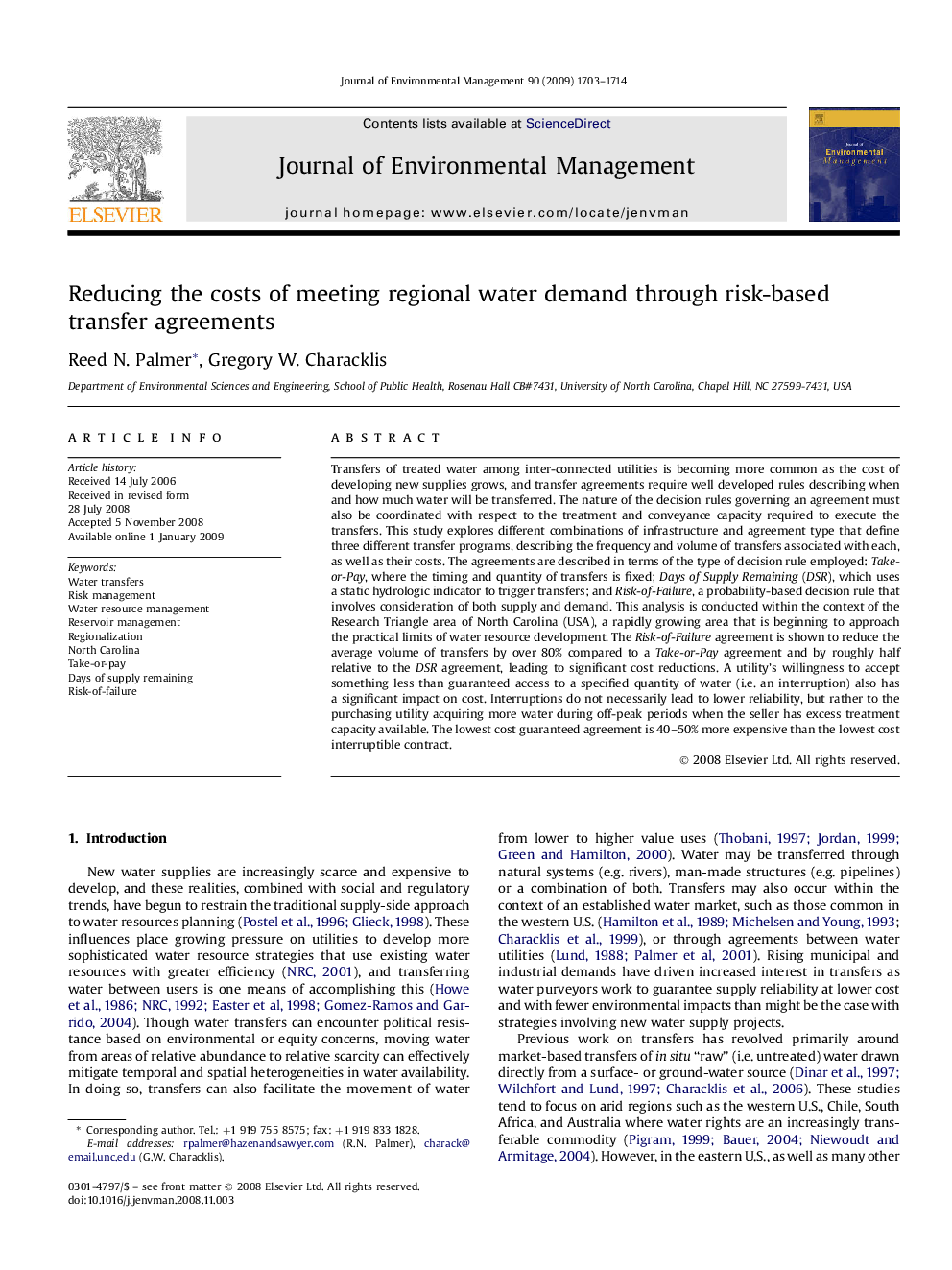| کد مقاله | کد نشریه | سال انتشار | مقاله انگلیسی | نسخه تمام متن |
|---|---|---|---|---|
| 1057361 | 947072 | 2009 | 12 صفحه PDF | دانلود رایگان |

Transfers of treated water among inter-connected utilities is becoming more common as the cost of developing new supplies grows, and transfer agreements require well developed rules describing when and how much water will be transferred. The nature of the decision rules governing an agreement must also be coordinated with respect to the treatment and conveyance capacity required to execute the transfers. This study explores different combinations of infrastructure and agreement type that define three different transfer programs, describing the frequency and volume of transfers associated with each, as well as their costs. The agreements are described in terms of the type of decision rule employed: Take-or-Pay, where the timing and quantity of transfers is fixed; Days of Supply Remaining (DSR), which uses a static hydrologic indicator to trigger transfers; and Risk-of-Failure, a probability-based decision rule that involves consideration of both supply and demand. This analysis is conducted within the context of the Research Triangle area of North Carolina (USA), a rapidly growing area that is beginning to approach the practical limits of water resource development. The Risk-of-Failure agreement is shown to reduce the average volume of transfers by over 80% compared to a Take-or-Pay agreement and by roughly half relative to the DSR agreement, leading to significant cost reductions. A utility's willingness to accept something less than guaranteed access to a specified quantity of water (i.e. an interruption) also has a significant impact on cost. Interruptions do not necessarily lead to lower reliability, but rather to the purchasing utility acquiring more water during off-peak periods when the seller has excess treatment capacity available. The lowest cost guaranteed agreement is 40–50% more expensive than the lowest cost interruptible contract.
Journal: Journal of Environmental Management - Volume 90, Issue 5, April 2009, Pages 1703–1714